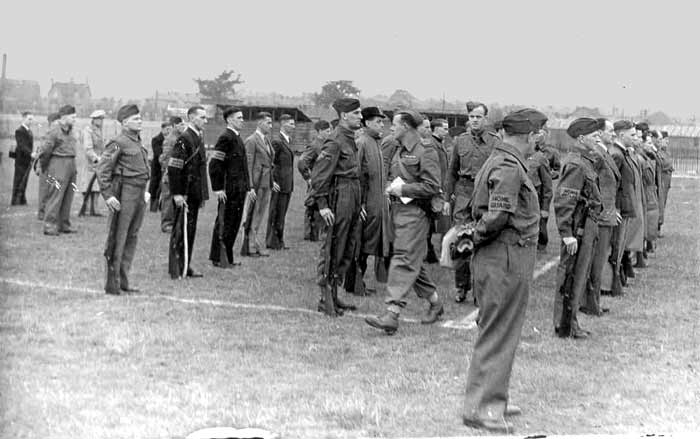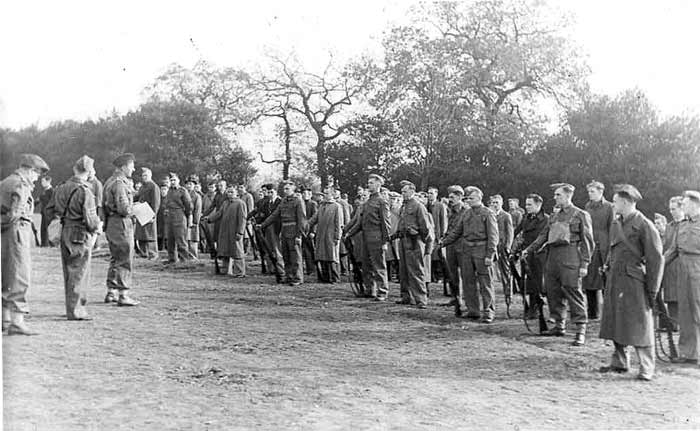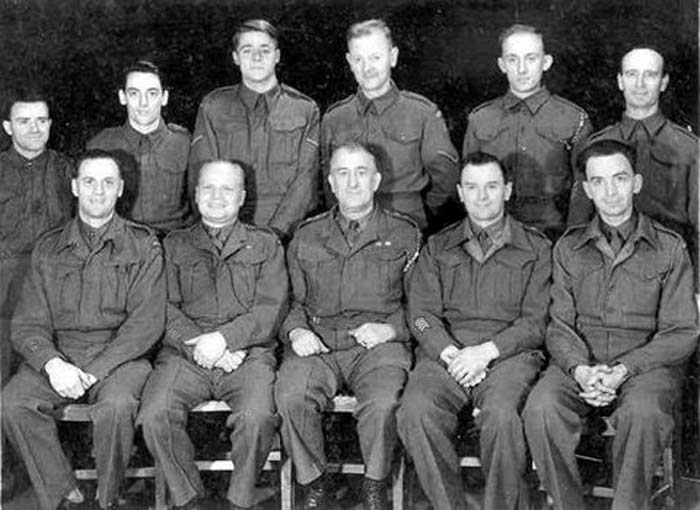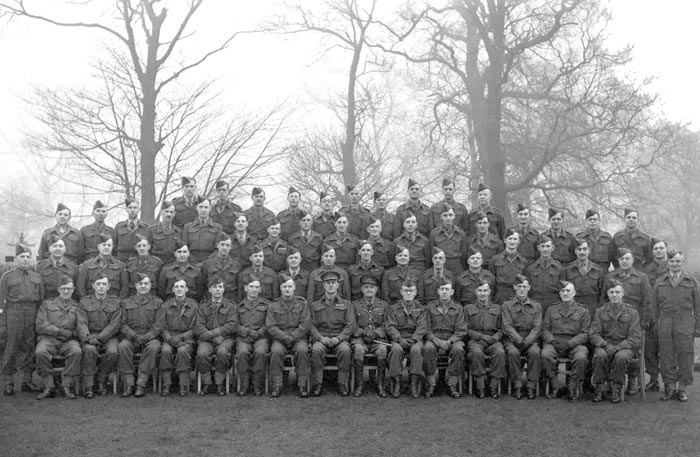THE L.D.V. AND HOME GUARD |
George Griffiths joined the L.D.V. in the early days of its life, probably in June 1940 in the initial rush to volunteer. By that time he was married with a family and lived at 25 Stanford Avenue, Great Barr. He found himself in one of the units which evolved in a matter of weeks into the 44th Battalion, one of more than thirty which eventually covered the city. Awareness of his personal qualities and his skills - amongst them markmanship which was demonstrated by his active involvement in the Company's very successful small-bore rifle club - and especially of his previous military experience led to his being appointed quickly to a position of authority. Initially he would have been a Section Commander or Platoon Commander but following the decision to introduce military ranks in November 1940 this changed to the commissioned rank of Second Lieutenant.
Units responsible for the Lucas factories evolved from the earliest formations of the local L.D.V./Home Guard from June 1940 onwards. There is information about these early Birmingham formations
elsewhere within this website. The 44th Warwickshire Battalion emerged in late 1940 and included within its area of responsibility at least one Lucas factory, that in Great King Street; there was almost certainly a significant sub-unit, of Company or large Platoon size, with specific responsibility for the factory itself. The images on this page show members of either the dedicated Lucas unit or of units closely associated with it.
Very early images survive showing members of either the 44th or the unit from which it evolved. The following photographs (possibly from different occasions) are likely to have been taken in the summer and autumn of 1940 and show the disparity of dress at that time. The initial denims seem to have been superseded by battledress for some members but the issue is patchy and many members are yet to be properly equipped.



Click on the above image to view an expanded version
George Griffiths was proud of his service with the Home Guard. His membership of it throughout its life represented 4½ years of uninterrupted, strenuous and entirely voluntary effort conducted whilst he held down a demanding day job at Lucas and somehow found time to care for his family. His stories of those times included a memory of long hours spent on the flat roofs of the Great King Street factory whilst incendiaries pattered down all around and demanded the attention of him and his comrades. The fact that the factory survived intact gives an indication of the effectiveness of these duties. As the coal scuttle still demonstrates he was a practical man as well as a courageous one: he recognised the propensity of the Sten gun to remove the fingers of the unwary due to the operation of its recoil/ejection mechanism and so he made a clamp/handle for the weapons issued to him and his section, thus eliminating the danger.
The following images probably come from a later period of George Griffiths's service than those above. The first shows officers, N.C.O.s and possibly Other Ranks from an unspecified sub-unit, almost certainly part of the factory unit and probably showing Home Guard members who worked in the same department of the Company. George is second from the left, front row.

And a further group, this time all apparently officers, in a wintry outdoor location. They are probably the officers associated with the Lucas Great King Street unit. Capt. F.J.H. Coleman is in the centre and George second from the right, front row. Lt. Zecharia Tolley, M.M., is on the extreme right, front row.
Further information on Lt. Tolley is available in this website.

The next photograph is probably of an entire Company of the 44th Warwickshire and, presumably, the one to which George Griffiths belonged. George and two further identified officers are all shown on it. This summer picture is likely to have been taken at one of the anniversaries of the May founding of the Home Guard, each of which was celebrated with parades,
demonstrations and often commemorative photographs.

Click on the above image to view an expanded and partly captioned version
The following and last image probably shows all the officers of the 44th Battalion, representing an increase of around 50% on the early 1941 level. This implies a similar increase in the overall Battalion numbers. Lt.-Col. Waring is identified in the front row
(8th from left), Capt. Coleman (12th from left), and Lt. Jack Orme who has been commissioned after February 1941
(14th from left). George Griffiths is standing in the first row back
(10th from left). The photograph seems to have been taken in the same location as the one above showing the Lucas officers and possibly at the same time.
Could its intention perhaps have been to record the men for the last time, at the moment of stand-down in early December 1944?

Click on the above image to view an expanded and partly captioned version

Lt.-Col. Waring presented a commemorative silver tankard to Battalion officers after stand-down in December 1944. That presented to George Griffiths is still preserved by his family. It is engraved as follows:
Presented to
Lt. G.H. Griffiths
--- by ---
Lt./Col. A.B. Waring
as a memento of
strenuous but happy times
spent with the
44th Bn. Warwick H.G.
during the momentous years
1940 - 1944
|